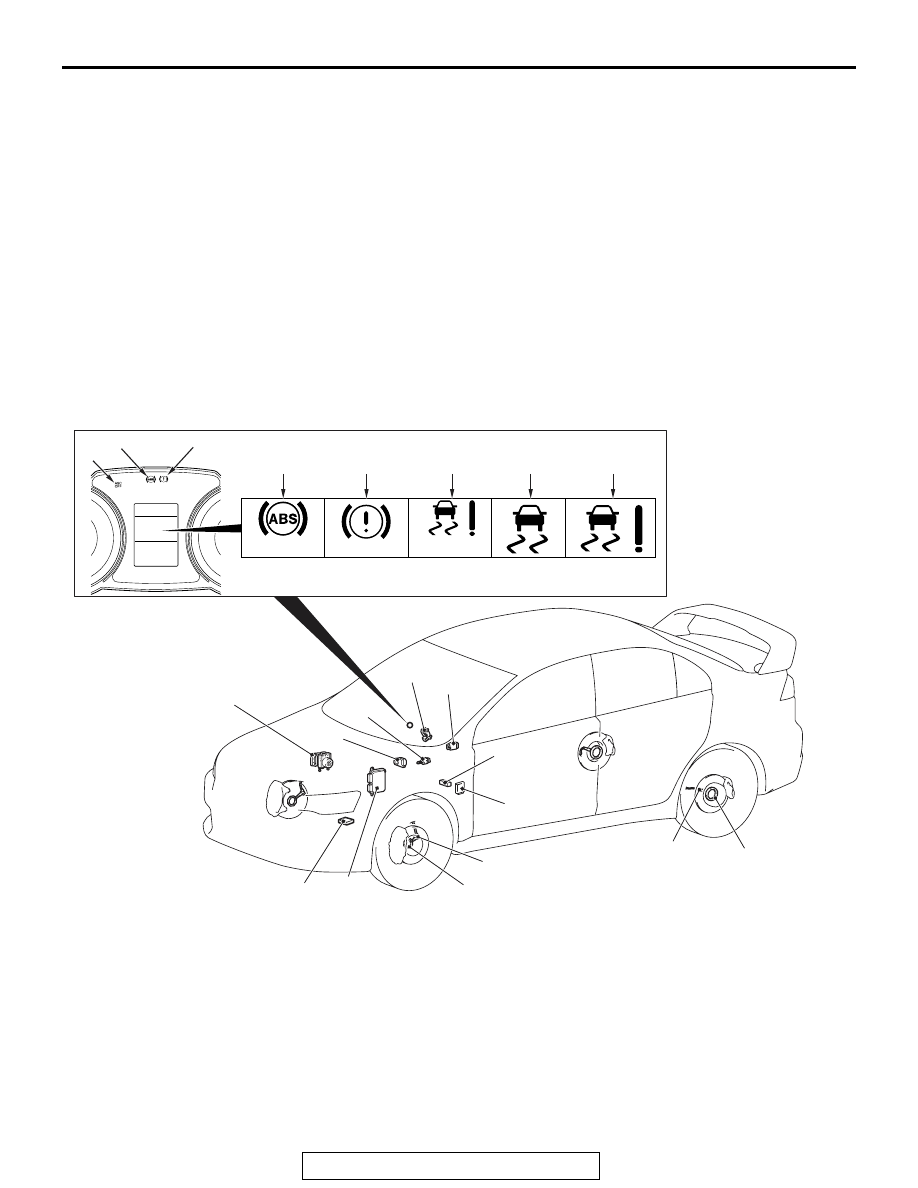Mitsubishi Evolution X. Manual - part 66

TECHNICAL FEATURES
TSB Revision
GENERAL
00-14
FEATURES
.
IMPROVED BRAKING PERFORMANCE
• In addition to the 10-inch through bolt type single
brake booster, the small and long stroke-type
master cylinder is adopted to provide rigidity, to
reduce weight, and to secure the assist force.
• Brembo™ 18-inch 4-pot front ventilated disc
brakes and Brembo
™ 17-inch 2-pot rear venti-
lated disc brakes are adopted to provide stable
braking force and improved braking feel.
• To the front, two-piece structure brake disk is
installed. <GSR: Option, MR: Standard>
.
IMPROVED STABILITY
• Front- and rear-wheel X-type brake line layout is
used.
• The brake pedal retreat suppression mechanism
that suppresses the retraction of brake pedal sur-
face upon a frontal collision is adopted.
• To the front brake and rear brake, the brake pads
with audible wear indicator are adopted which
warn the driver of the wear limit.
ACTIVE SAFETY
M2000031000959
ACTIVE SKID CONTROL SYSTEM (ASC)
AC709630
CHECK
SERVICE
REQUIRED
SERVICE
REQUIRED
AB
10
12
13
11
15
14
17
16
7, 8, 9, 22
19
20
5
3
4
6
18
21
1
2
1
2